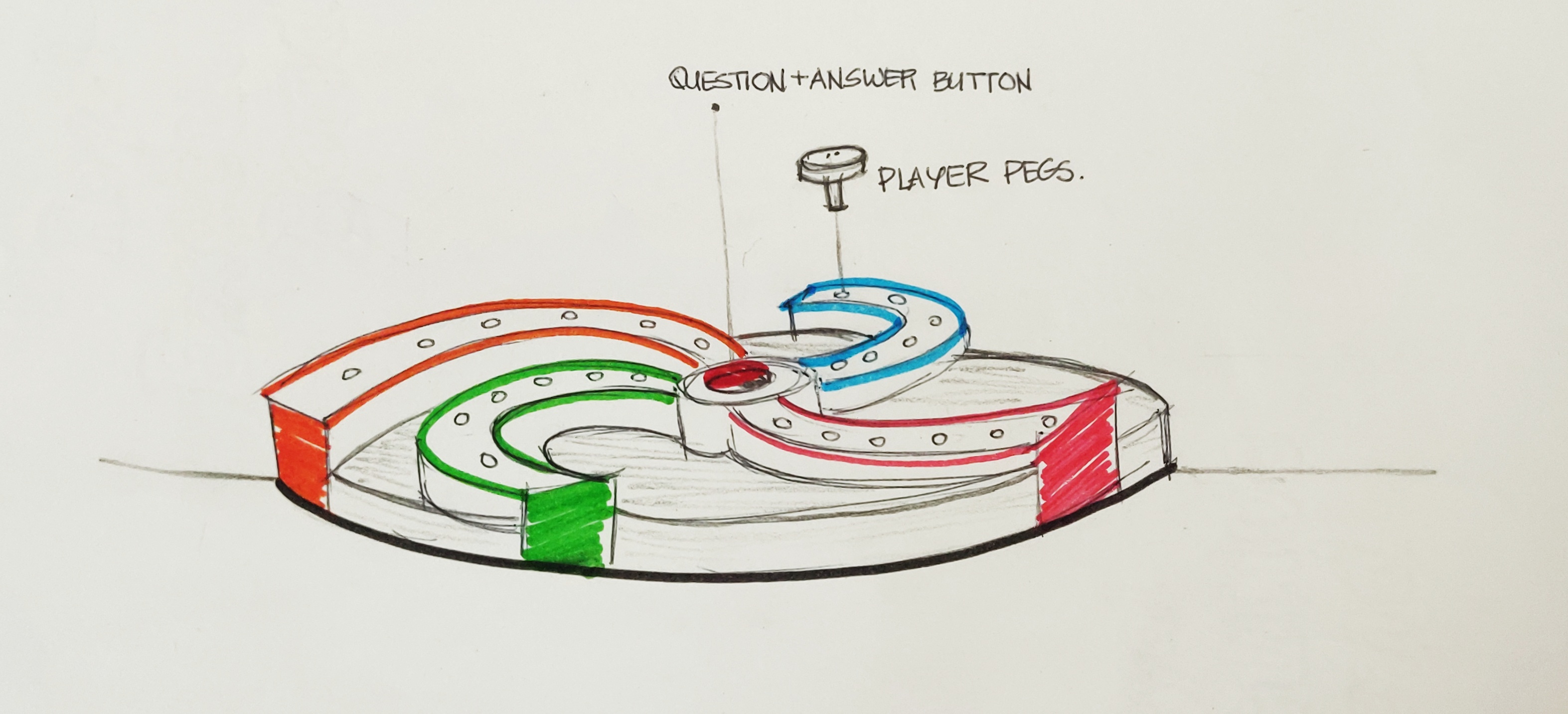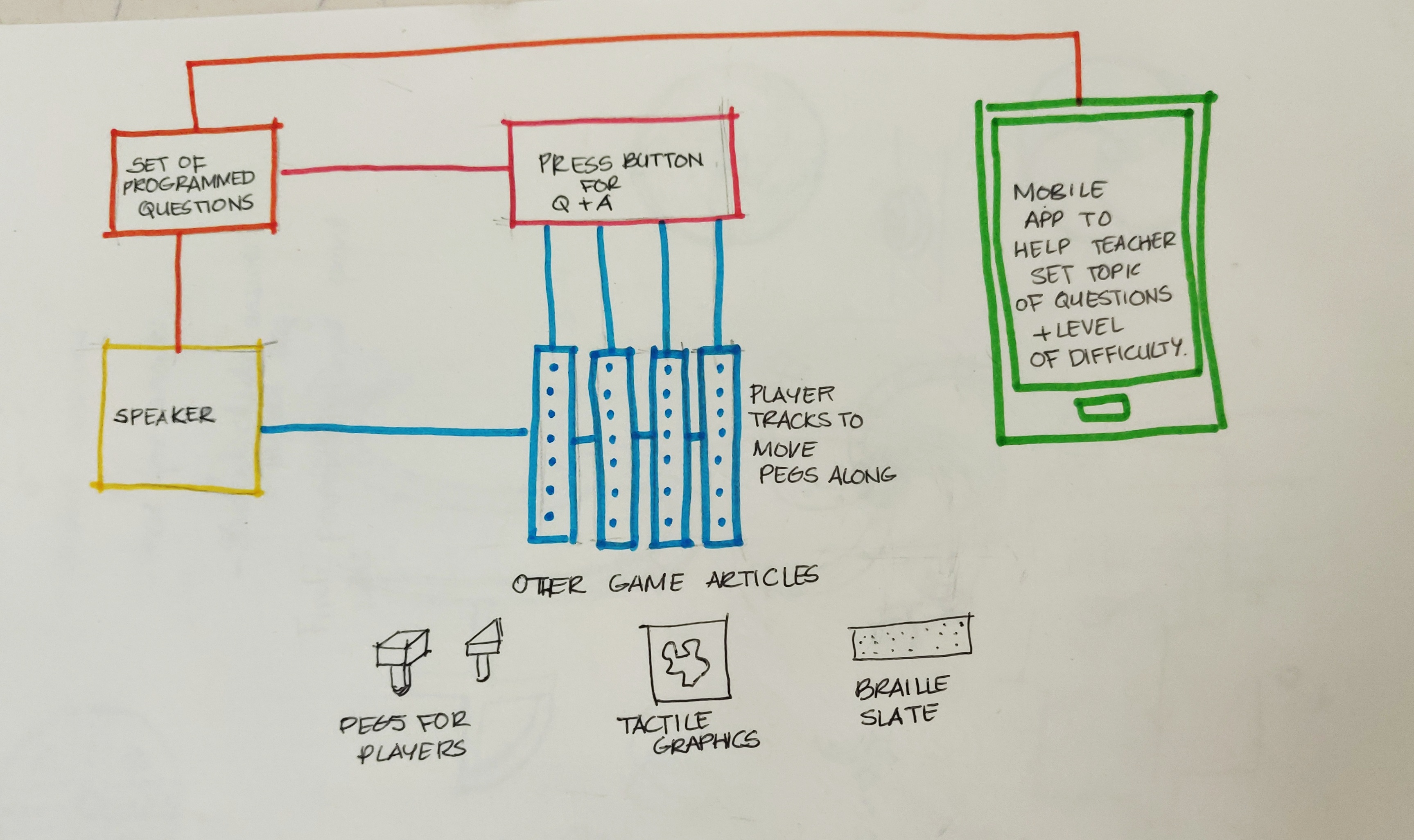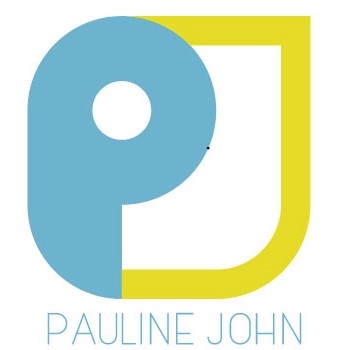Assignment 2
Project Proposal
Project Title
Inclusive science game for children with visual impairment
Problem Statement
The lack of inclusive resources and engaging teaching methods reduces the interest of visually impaired students in science. Most visually impaired students switch to arts streams as they move to higher grades because of this reduced interest and absence of sufficient accommodations to enable their science education.
Concept
A science game is envisioned to help students practice their science knowledge. This includes their ability to identify parts of tactile diagrams as well as improve their spellings. This project is an extension of my second semester design project.
Sketch of Design

Game Play
The goal of the game is for the player to move his peg from his starting point to the finish point. The first person to reach the finish point wins the game.
Game flow:
1. One student decides to start the game. The student presses the question button to generate a question.
2. Once listening to the question the student then answers. He then presses the answer button to check his answer.
3. If his answer is correct he moves his peg one step forward towards the end point. If his answer is wrong then the turn passes to the student on his left. This continues in a clockwise circle where students take turns answering questions.
4. Bonus points- If the student presses the 10 second timer before the question button then he has to answer within 10 seconds. If he answers correctly within that time then he gets two moves.
The questions programmed can be determined by the teacher depending on the chapter being taught during the time in the class. Also the difficulty of the questions - simple factual to application based can be determined by the teacher.
Users
Primary schools science students with and without visual impairment. The app interface will be used by the teacher or instructor.
Game Components and Layout
The rough layout and different components of the game are described in the below image.

Inclusive Elements
The different paths that each player navigates along has a texture that is different for each player allowing the VI student to easily distinguish.
As the student answers a question correctly and moves his peg forward and puts it in the next slot the board makes a sound. As the peg moves closer to the end point the intensity of the sound increases gradually. This enables all players to be aware every time a player moves his peg forward and to gauge how far they have gone.
